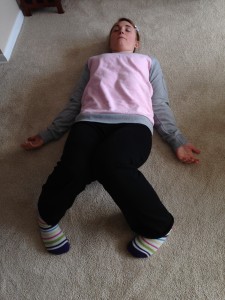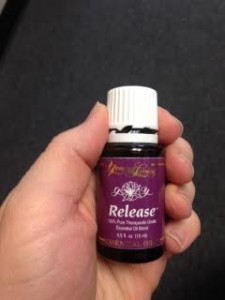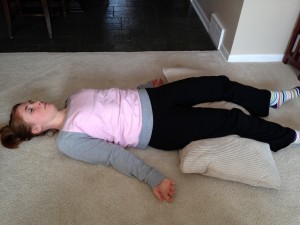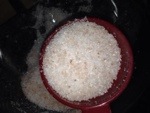Category Archives: Seasonal Self Care Class
Winter is NOT the time to lose weight
My husband was all set to invest in some reset program. Its that time of year, a few holidays of rich foods and a tighter waist band and we find this need to look for something outside of ourselves to look or feel a certain way. Maybe the problem isn’t us, maybe the problem is marketing.
We started talking about a better plan, instead of investing $200 into powders and bars that sounded a lot like torture (to me) into whole food, real food, the kind of food that doesn’t last very long because its alive. I started thinking about Laura Ingalls. What would they be eating right now in the dead of winter? Vegetables that could be stored, squashes, potatoes, beans, apples and wild game that could be hunted. Winter is comfort food season. Quite honestly this is not the time to lose weight, its the time to hold on for warmth! The best we can do right now is to stay away from sugar and eat warm, slow cooked, from scratch foods. We decided to add the kind of foods into our lives that we wanted to be eating and allow the ones we want to avoid like christmas cookies to naturally fall away from our palate. There’s only so much you can eat in a day and by focusing on more plant based foods like vegetables our bodies are nourished and will be less likely to be searching for sugar fixes. I looked all over for smoothie recipes that felt balanced enough for the cold weather and everything I looked at felt too much like summer. So my plan is to make up some sipping vegetable stock and chicken stock when I’m craving a cup of tea in the afternoon to drink instead. I’ll share the recipe once I’ve gotten it down.
If you want to understand how acupuncture helps with weight loss I wrote a series awhile back if you want to take a look, just wait to use the principles until the spring when its what your body is looking to do. 😉
Acupuncture for Weight Loss Part 1
Acupuncture for Weight Loss Part 2
Acupuncture for Weight Loss Part 3
Check back for winter recipes and join me for the next Yogapuncture for Winter if you want to learn more about connecting to the seasons. Our lunch today was inspired by this complete nourishing winter bowl, I added some green curry it was warm and delicious devoid of deprivation of any kind.
The Shortest Day of the Year
Happy Winter Solstice!
Today is the shortest day of the year and to me that feels like really good news. It means that everyday will become just a little bit lighter.
Like we talked about in the winter yogapuncture winter is the time of going inward, when our energy is deep and we should be resting. This can be tricky to balance with the holiday season.
Today take some time ideally somewhere between 3-7 (its when the kidney/urinary bladder the organ system of the season is most active in the body) and come into constructive rest pose. Its deeply restorative for your body and if held for 10 minutes is the equivalent of 2 hours sleep.
For more info and how to do constructive rest pose head over here to the archives! Breathe deep and enjoy!
Want to know more about thriving in the winter season? Join me Saturday Jan 14th at OhmMother Yoga for the next Seasonal Harmony: Yogapuncture for Winter. For more information and to register visit here.
Protected: Connecting to the Seasons: Winter C.L.
Double Chocolate Walnut Muffins
I came across this recipe from the Minimalist Baker and thought it was a perfect treat for the winter months. I often say food is the easiest and hardest thing to change when it comes to wellness. If food doesn’t taste good why would you want to eat it? That’s why I like to share a treat at yogapuncture especially when its made with whole foods that nourish the organs of the season. 🙂 Here is my version below, the bold ingredients especially nourish the kidney/urinary bladder system of winter.

** It is not vegan or nut free so feel free to use the original recipe if that works better for you
What you need:
- 2 eggs
- 1 cup roasted beets (if you really don’t have time for roasting, Trader Joe’s sells peeled, roasted beets all you need to do is puree yourself)
- 1/4 cup honey (local if possible)
- 10 dates (soak for an hour before starting to prep muffins)
- 1/2 tsp Himalayan sea salt.
- 1 teaspoon vanilla
- 1.5 tsp baking soda.
- 1/4 cup melted coconut oil
- 1/3 cup unsweetened coconut milk
- 1/3 cup cocoa or cacao powder
- 1 1/3 cup flour
- 1/3 cup chocolate chunks + more for topping
- 1/3 cup walnuts + more for topping
What you do:
- Preheat over to 375 and line muffin tin with liners
- Place beets, soaked dates (I tore into pieces before putting in), coconut milk and melted coconut oil in food processor or blender. Blend until smooth
- Mix wet ingredients and eggs with baking soda, salt, cocoa powder in mixer. Slowly add flour 1/3 cup at a time until all ingredients are well blended.
- Add chocolate chunks and walnuts and stir
- Pour batter evenly into 12 muffin tins. Top each muffin with a couple pieces of chocolate chunks and a walnut.
- Bake for 15-18 minutes or until a fork comes out clean
What is the Seasonal Self Care Class?
I have been refining this collection of information for over 10 years, it began as my thesis on Chinese Medicine and the seasons and then one day at the beach the idea to incorporate yoga with the seasons and meridians hit me. It seems everyone I talk to about the concepts of Chinese Medicine asks where can I read a book about all of this. I’ve never found one that I felt was a simple introduction to the concepts of acupuncture that a lay person could understand and use in their daily life.
It is my intention for this ongoing class to be a way to learn and understand these concepts not only intellectually but also as an experience that can be applied to your daily life.
The ancient doctors’ job of their community was keeping people healthy; if someone got sick they had to pay their patient because they had not done their job correctly. This system was born out of prevention, to sustain a healthy life to the age of 100. It is also a system based on observation because of this it is easy to find contradictions because teachers may have made conflicting observations and passed those on to their students. They honored all ways of practicing as each way served a purpose or had a value even if a different or better way was later discovered. Sometimes these are simply cultural. For example, in China they prefer thicker gauged needles and they manipulate the needles until a strong sensation is felt, in Japan thin gauged needles are barely inserted into the skin, Korean acupuncture uses a hand system, some acupuncturists prefer to only use a method of acupuncture in the ear. The most fascinating part is that all of these systems work and it is also why acupuncture can be so hard to do clinical controlled studies on because they may think they are doing sham acupuncture when they may just be using an unknown system.
With that being said the idea and concepts discussed should never be taken at face value. They are simply points to consider. It’s up to you to be your own advocate in your body and find what makes you feel most whole. Not all ideas will work at all times and each season will be different just like we have mild winters and long winters. Some days are rainy or sunny or foggy. Taking on small bits of information and making small changes over time can add up to a lifestyle of wellness.
In school whether its grade school, high school, college etc. we study the body by systems. When do we put all of these systems back together to understand how the body functions as a whole?
Do we understand what a whole, healthy body feels like?
The body has the amazing capacity not only to maintain homeostasis but to remain in the present moment. What most people might not understand is how choices impact this. For example, the body’s ph is 7.34 and no matter what we do it will strive to stay here as long as we are alive. For example, if you drink a coke which is very acidic (somewhere around a 2) the body will compensate to keep homeostasis by leaching calcium out of the bones. One coke might not change the body, however, overtime all of that compensation could lead to many problems from muscle cramping to osteoporosis.
So how do we find balance in our lives? Perhaps we should learn a lesson from our bodies. In order to maintain homeostasis in the moment the body compensates after drinking that coke and borrows some calcium. It doesn’t consider the detrimental effect this loss of calcium will have long term- it is trying to survive in the present moment. The easy answer then is, if we stay present in this moment, the future is planned for.
Let’s talk about balance. What does the concept of balance look like to you? Perhaps an image of a judicial scale comes to mind. This idea is very static and rigid, life most times is not. I’d like for you to consider the idea of harmony. This concept is more fluid. The idea of Chinese Medicine is that each system supports the next and they all work together to keep the body healthy.
If a disharmony occurs it doesn’t happen in isolation to one organ system- the entire body is impacted, emotions are impacted, the individual’s life and all those a part of it are impacted. Kind of like that saying, “If mom’s not happy, ain’t no body happy.” To find harmony we need to look at what caused the dis-harmony. As the body becomes healthier all areas become healthier. It’s a domino effect in the right direction.
So where do we start? With awareness. A teacher once told me, awareness precedes change. First we have to know how we feel, what we are doing and then we can make changes if necessary. Small, realistic changes over time have the deepest impact and longest results.
Take some time to think about your day from turning the alarm clock off, showering, eating breakfast (if you ate breakfast), driving to work, tending to your family, phone calls, emails, going to the bathroom etc etc. As you are thinking about your day notice your body, notice your breath. How does your life feel in your body? How is your body compromising to maintain homeostasis? Are you bracing your body with tight muscles? Holding your breath?
You might imagine how over time this un-awareness of how your body manages your day can contribute to disharmony in the body, in relationships, in the very activities that we enjoy.
With that in mind, could you use a little more energy to use during your day?
In Chinese Medicine it is believed we get our energy from 2 places: our parents and our lifestyle. There’s not much we can do about our parents. The rest of the equation we have a little more control over. Da Qi + Gu Qi = Zhen Qi. What in the world does that mean? How you breathe and how/what you eat contributes to how much usable energy you have and how good you feel.
Da Qi: The Breath
The yogis believed we have a certain number of breaths to live, so they practice slow, deep, mindful breathing. An easy way to shut off fight/flight (stress!) is to exhale deeper than your inhale. This will not only calm you it will help tone your abdominal muscles strengthening your core and lower back in addition to taking stress off of the neck and shoulders. When you can, take a moment to check in with your breathing or take one or two deep breaths for a quick time out in the middle of a stress filled moment. You might end your day with some deep breaths as well to drift off into more restful sleep.
Breath is the mirror of the mind. Here are some examples of what happens to our breath on a day to day basis:
- Fear- gasping for air
- Resisting something- hold the breath
- Anger- short jerky, incomplete breaths
- Fatigue- long inhales through the mouth. Yawn
For optimal health, breathing should be performed nasally and should be full and rhythmic. The breath should come in through the nose and out through the nose. The nose is anatomically designed to filter and warm the air for the lungs, therefore try to use it as nature intended.
Gu Qi: Food
There are gobs of information on what you should and shouldn’t be eating. Alot of it can be confusing as many ideas are contradictory. One thing just about everyone agrees on is that Twinkies will never be a “superfood”. I tell my patients to eat food that is alive. Anything that can live longer than you can on a shelf try to avoid. The best thing you can do when you eat, whatever it is that you eat is to eat with awareness. Don’t multitask when you eat! The spleen/stomach controls digestion and is damaged by overthinking. If you are answering emails while munching you could be setting yourself up for digestive problems, period issues, obsessive thinking and not to mention overeating.
Zhen Qi= True Energy
Your true energy is the combination of your genetics and your lifestyle (air and food). TCM believes that your lifestyle is most important of these two forces because it is constantly being replenished. Our genes are our genes but our role in what we eat, how we breathe and move can have a huge impact on what genes manifest. Due to the changes in our environment each season our lifestyle can modify to adjust accordingly. There is a time to expend energy and a time to conserve. When we follow the flow of nature our bodies can function most optimally.
The gist of TCM is to keep harmony in the body by keeping the circulation of blood and energy flowing unimpeded. When blockages happen this causes the body to not be able to function as optimally as it can which can eventually affect every part of the body. Acupuncture can be a gateway to awareness. It literally forces you to be still for a while. After treatments most people feel better, “cleaned out,” energized and relaxed. With this new awareness they naturally start to make other changes in how they respond to situations that used to “stress them out.”
A bit about what acupuncture feels like
Many people are surprised how painless acupuncture is. Occasionally you might feel a quick pinch or electrical sensation that you might think about longer than you actually feel, this sensation is called “da qi” and basically means we woke up some stagnation and got energy flowing there again. If anything feels uncomfortable for longer than 30 seconds or so ask for needles to be adjusted. Once needles are in, your body may feel heavy/weighed down or light/floating or both sensations at once. Sometimes awareness can rest on a couple of needles like they are “talking” to each other and then change to another group of needles, sometimes you might swear there is a needle where you know there is not, we call this a phantom needle. It is opening up a pathway. Sometimes acupuncture points can feel really achy or itchy, this is all within the realm of normal and will subside during the treatment. A treatment can make some sleepy and others alert, the needles are tapping into your body’s healing resources for what is needed now. Each treatment can be a different experience. Because acupuncture addresses the body as a whole positive “side effects” can include more energy, better quality sleep, improved digestion and a more even mood.
When acupuncture is practiced in a group setting the effects are magnified. This happens because of entrainment. Basically everyone is on the same wave length and so deeper relaxation can occur. My teacher once said that needles are like antennas pulling universal qi/energy into the body. When a group receives acupuncture together more energy is harnessed.
A bit on yoga
The systems of Yoga and Traditional Chinese Medicine are very similar, sometimes referred to as sister medicine with the Himalayan Mountains being their only divide. In the West we have picked a part these systems and taken pieces when in actuality they are both parts of bigger systems. While we won’t get into all of the specifics of these systems I wanted to address the nature of the yoga postures that will be demonstrated/preformed in class. There are over 84,000 yoga postures and chances are there will be some that just about any body can do. I choose to find postures that are simple and effective in nature so that you can feel confident in developing a home practice free of injury or over thinking. Looking like a picture of a yogi on a beach in a pretzel like posture is not necessary to receive the benefits of this practice. Whether you’ve never done yoga or you have been practicing for a long time it is my hope that you will find these sequences of postures for each season beneficial. Postures should be comfortable to get in and out of, free of pain that you can easily breathe through. Yoga means to unite the breath with the body so it is essential that we breathe during our postures to receive the intended benefit of each pose. It is often said if you’re not breathing, you’re not doing yoga.
Each yogapuncture class includes a short lecture on Chinese medicine and how it relates to what is happening environmentally/seasonally. Yoga postures are tailored to the current season and are accessible to beginning and seasoned students. Class ends with a seasonal acupuncture treatment.
Winter is the time of Kidney/Urinary Bladder system, the emotion of fear and coldness. We will explore these concepts with restorative postures to fortify our constitution, build endurance, peace and will power during this time of inner reflection, reverence and rest.
Spring is the time of Liver/Gall Bladder system, the emotion of anger and wind. We will discuss spring cleaning/cleanses, anger and courage.
Summer is the time of the Heart/Small Intestine system, the emotion of joy and heat. We will discuss how to harness the abundant energy of the season and how to not “burn the candle at both ends.”
Late Summer is the time of the Spleen/Stomach system, the emotion of worry and dampness. The spleen/stomach is related to all times of transition/transformation and is present in each season.
Autumn is the time of the Lung/Large Intestine system, the emotion of grief and dryness. This is a period of starting to turn inward.
Each seasonal self care class is unique!
A Ritual for Letting Go
For the College of Lake County session of yogapressure for Fall we used a series of essential oils with the intention of working on letting go as the emotion of the Lung/Large Intestine system in Chinese Medicine is grief. I will post the yoga sequence soon (just as soon as I can get someone to help me take pictures of the postures 🙂 ) For now here are the oils. Interested in hosting a quarterly yogapressure? Let me know!
Valor for balance and magnifying the effects of the other oils. Contains rosewood, blue tansy, frankincense, spruce and almond oil. Apply to soles of feet
Release oil blend for assisting in letting go of anger. Contains ylang ylang, lavadin, geranium, sandalwod, blue tansy, olive oil. Apply to lower right rib cage
Balsum Fir can help respiration, grounding, stimulating to mind, relaxing to body. Apply to nape of neck and under nose.
Grounding oil blend for balance, stabilize, coping constructively with reality. Contains spruce, white fir, ylang ylang, pine, cedarwood, angelica, juniper. Apply to back of neck and breast bone.
Hope oil blend for reconnection, moving forward. Contains melissa, spruce, juniper, myrrh, almond oil. Apply to outer edge of ears.
Harmony to amplify wellness. Contains geranium, rosewood, lavender, sandalwood, frankincense, orange, lemon, angelica, hyssop, Spanish sage, jasmine, roman chamomile, bergamot, ylang ylang, palmarosa and rose. Apply over heart center.
Change Your Breath, Change Your Mood
Generalities on Breathing:
The breath is linked to the nervous system. Inhaling corresponds to your sympathetic fight or flight response; Exhaling corresponds to your parasympathetic stay and play response. Therefore when the exhale is longer then the inhale, relaxation and healing can occur in the body.Philosophy of Good Breathing:
Ancient Yogis believed that people have a certain number of breaths to live, not a certain number of years. If you want to see proper breathing watch a baby!
Most people do not breathe efficiently as a result of constricting clothes, poor posture or stress in a situation. Next time you are in a stressful situation take note of how you are breathing. Most times, stress or anxiety can cause the breath to become shallow, rapid and only from the chest or worse yet the breath is held. Redirecting breathing may allow perspective or feelings to be shifted about stressful situations. Also, in a position of poor posture with a rounded back and collapsed spine the diaphragm is unable to fully extend which causes breathing accessory muscles to work harder. (Think about those tight upper traps, levator scapulas and scalenes.)
Improper breathing changes the pH in the body, can cause one to pass out or faint and can even on a smaller scale leave one feeling fatigued and lethargic. Proper breathing is the fastest way to detoxify the body, the liver is actually resting next to the diaphragm. When you breathe your liver breathes with you.
Breath is the mirror of the mind. Here are some examples of what happens to our breath on a day to day basis:
• Resisting something- hold the breath
• Anger- short jerky, incomplete breaths
• Fatigue- long inhales through the mouth. YawnFor optimal health, breathing should be preformed nasally and should be full and rhythmic. The breath should come in through the nose and out through the nose. The nose is anatomically designed to filter and warm the air for the lungs, therefore try to use it as nature intended.
The diaphragm is the primary breathing muscle, accounting for 75% of the power of respiration. In order to breathe efficiently, the abdomen must expand so that the diaphragm has “somewhere to go.” The ribs and intercostals must pull the chest wall out to expand the lungs the rest of the way.
Exhaling breathes should last as long as the inhaling breath. Making the exhalation last twice as long as the inhalation is even more beneficial. By making the exhalation longer, the recoil capacity of the chest increases (slightly) as the second set of intercostals contract to return the rib cage back to its original position. Also, the pressure between the inside and outside of the lungs is exaggerated thus helping to pull more air into the lungs.
Breathing Exercise:
The easiest way to explore the breath is lying supine. You can also try breathing in a seated or standing posture. Try not to let the mind wander.
Three Part Breath:
2. Begin first by becoming aware of your breath. Simply observe the way your breath feels try not to alter or change it. Note where your breath moves in your body and how you feel.
3. Place both hands lightly on your lower abdomen just below the navel. Slowly begin to deepen the breath into your lower belly and feel the rise and fall of your belly as you breathe into this part of your body. Do not force your breath where it is not ready to go start where your body is ready to be and visualize your breath deepening until it is where you would like it to be.
4. Next slide both hands to the other parts of your rib cage and feel your breath expand in your ribs.
5. Keep one hand on the outer rib cage and one hand on the lower belly and feel the breath expand between the lower belly to the rib cage as your inhale and relax first from the ribs to the lower belly as you exhale. Let the breath be relaxed as you inhale and exhale and let the transition from belly to ribs be smooth and seamless.
6. When this two-part movement is comfortable for you imagine your breath starting in the lower belly expanding to the outer rib cage and ending just beneath your clavicles. Let the air you inhale and exhale move in a triangle pattern from belly to ribs to clavicles. Do not force your breath where it is not ready to go start where your body is ready to be and visualize your breath deepening until it is where you would like it to be.
Think about the inhale expanding and rising upwards from the belly to the chest and the exhale falling and returning inward on the exhale. Let go of all of the air in the body before taking the next inhale.
Natural Remedy for Dryness
The pathogen that is most active in the fall is dryness. Interestingly enough, the lungs which are associated with the fall also control the skin and this is a common place to experience dryness starting in the fall and carrying into winter.
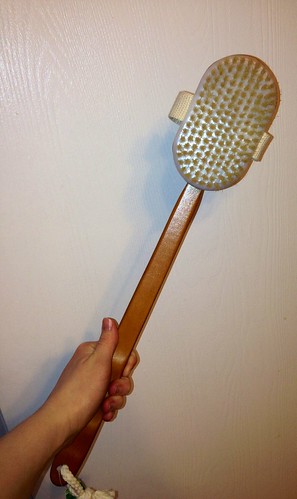
I have talked about dry brushing in the past as well as home made Epsom salt spray. Recently I started combining the two. The results so far have left my skin feeling smooth and polished like I just spent the day at the beach without the sand.
My routine is to dryness brush before a shower and then during the shower I will spray my skin with the Epsom salt spray and massage for a gentle extra exfoliation and then continue my shower as usual.
To read more about the benefits of dry brushing and Epsom salts click on the respective links. Let me know what you think!
Welcome Fall
I realize its been awhile since I’ve had a chance to blog. I’ve been an enjoying a wonderful summer playing in the sunshine with my daughter and we just got back from an action packed trip starting in Colorado going through Estes Park, and then on to Grand Teton National Park, Yellowstone and spending time in Montana, Jackson Hole, and Idaho and back to Fort Collins. 1800 miles and many hikes later our family is feeling refreshed and ready for fall.

I always enjoy fall. It is a great reminder that their is beauty in death, in letting go and I also love being able to wear flip flops with sweaters. (its the little things in life)
In Chinese Medicine the Metal Element is most active and this relates to your Lung/Large Intestine system. This system is essentially your immune support. The lungs control your skin and nose and the pathogen of this season is dryness. When in harmony the lungs assist proper respiration and contribute to giving energy to all the other systems of the body. However, the lung is considered a “delicate” organ and is easily susceptible to attack which is why many people suffer more with respiratory issues, allergies and colds/flu during this time.
Chinese Medicine is first a foremost a system of prevention. So here is what you can do to keep your body strong this fall.
Incorporate pungent and white foods to your diet. Garlic and onion are the first to come to mind. They are great for the immune system and taste great as well. Lung shaped foods like almonds are also great for the season. As the weather cools it is also important to eat warming foods. Soups, stews and crock pot dinners all help to nourish the body in the cooler months. Staying away from dairy and ice cream helps to reduce phelgm in the body as well.
I will be sharing more soon. Make sure to look for the yogapressure blog for the yoga postures and essential oils for fall coming soon where we address the emotion of the season: grief.
